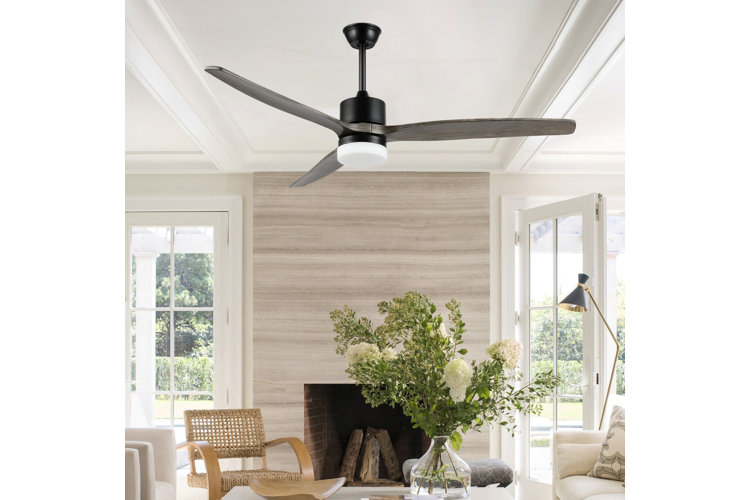Which Way Should the Ceiling Fan Spin? The Best Ceiling Fan Direction for Each Season
Change the direction with the seasons.
Wondering which way should a ceiling fan spin? You’re not alone. Ceiling fans are great for any room (inside or outside) and are known for their ability to circulate cool air in the warmer seasons, but the answer to this question still remains a mystery to some. If you’ve been wondering which direction ceiling fans should be spinning during cool versus warm months, we’ve put together a guide to help choose the best ceiling fan direction for each season.
Tip!
To learn more about installing a ceiling fan correctly, read our guide How to Install a Ceiling Fan.
Finding the Right Ceiling Fan Direction
Do you like keeping your ceiling fan on all year long? Read on to know which direction ceiling fans should turn during the summer and winter months.
Ceiling Fan Direction in Summer
During the warm summer months, ceiling fan direction should be spinning counterclockwise. This direction allows the fan blades to push the cooler air down to establish a comfortable cool breeze. The blades push the air down in a column, making the room feel cooler than it really is and improving air circulation to keep temperatures consistent, which reduces how often your AC needs to run (we love a good money-saving hack!).
Ceiling Fan Direction in Winter
While it may seem unhelpful to turn on a ceiling fan during the winter, it can actually make your room feel warmer. Set your ceiling fan direction to spin clockwise and put it on the lowest setting available. Warm air naturally rises towards the ceiling. The ceiling fan will pull up any cool air and send the warmer air that rises towards the top of the room down, making the room feel warmer. This allows you to lower the temperature in the room a few degrees and save on your monthly bill.
Specific Ceiling Fan Exceptions
(Shop this image: wood porch swings, outdoor ceiling fans, geometric outdoor rug, wicker patio chairs, and hanging planters)
When it comes to ceiling fan directions, there are a few exceptions.
Vaulted Ceilings
For vaulted ceilings, you’ll want to leave the fan spinning counterclockwise all year long. Due to where the ceiling fan is installed, the ceiling height makes it unlikely that you will feel any cool air.
Dining Rooms
For dining rooms, set the fan to turn clockwise at a medium to low speed. This keeps the fan from cooling your food down. There will still be a little airflow cooling you, but it will not be as intense or take away from your dining experience.
Outdoor
For outdoor ceiling fans, keep the fan spinning counterclockwise at high speed. This will help you with more than just cooling – the force of the air will also help keep pesky bugs away.
How to Change the Direction of Your Ceiling Fan
(Shop this image: upholstered beds, white duvet covers, framed wall art, gray throw blankets, and patterned throw pillows)
Many ceiling fans come with a remote control that allows you to adjust the speed and direction of the blades. Press the button to speed up or slow down the fan and change the direction that it is spinning. If your ceiling fan doesn’t have a remote included, look for a switch on the motor housing below the blades. Flip the switch in the correct direction for the season. Be sure to check your manufacturer’s recommendations to confirm how to change the spinning direction of your specific ceiling fan model.
If you are unsure what direction your fan is spinning, look up at your spinning fan while running on low. Watch the blades. If they turn to the left, the fan is spinning counterclockwise, the best setting for warm weather. If the blades are spinning to the right, the fan is running clockwise, which is the best setting for cold weather.
Tip!
Looking for more information on ceiling fans? Read our guide Your Guide to Buying Ceiling Fans.
Now that you know more about ceiling fan direction, it's time to give your home the breeze it deserves!



